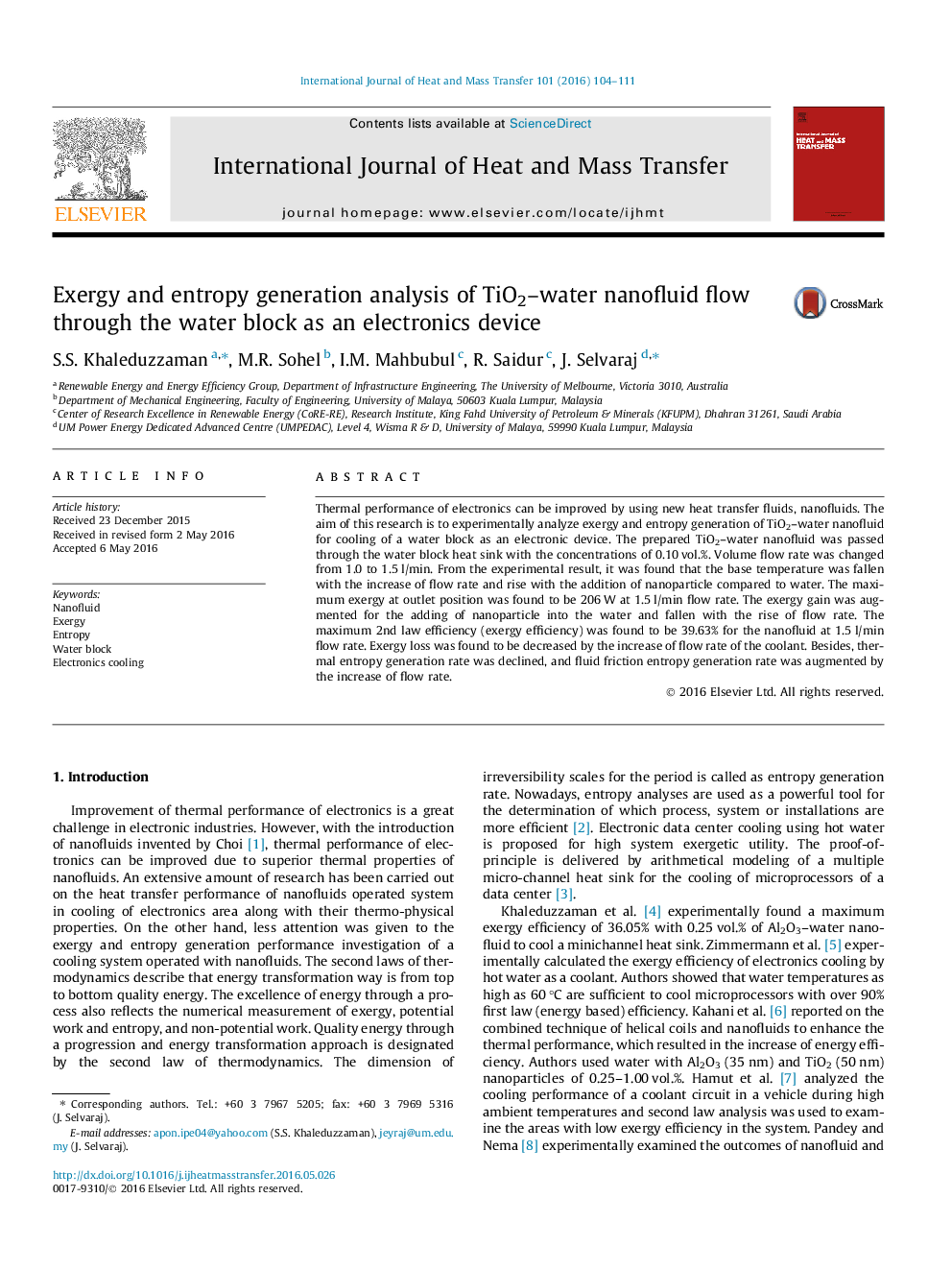| Article ID | Journal | Published Year | Pages | File Type |
|---|---|---|---|---|
| 7055159 | International Journal of Heat and Mass Transfer | 2016 | 8 Pages |
Abstract
Thermal performance of electronics can be improved by using new heat transfer fluids, nanofluids. The aim of this research is to experimentally analyze exergy and entropy generation of TiO2-water nanofluid for cooling of a water block as an electronic device. The prepared TiO2-water nanofluid was passed through the water block heat sink with the concentrations of 0.10Â vol.%. Volume flow rate was changed from 1.0 to 1.5Â l/min. From the experimental result, it was found that the base temperature was fallen with the increase of flow rate and rise with the addition of nanoparticle compared to water. The maximum exergy at outlet position was found to be 206Â W at 1.5Â l/min flow rate. The exergy gain was augmented for the adding of nanoparticle into the water and fallen with the rise of flow rate. The maximum 2nd law efficiency (exergy efficiency) was found to be 39.63% for the nanofluid at 1.5Â l/min flow rate. Exergy loss was found to be decreased by the increase of flow rate of the coolant. Besides, thermal entropy generation rate was declined, and fluid friction entropy generation rate was augmented by the increase of flow rate.
Related Topics
Physical Sciences and Engineering
Chemical Engineering
Fluid Flow and Transfer Processes
Authors
S.S. Khaleduzzaman, M.R. Sohel, I.M. Mahbubul, R. Saidur, J. Selvaraj,
